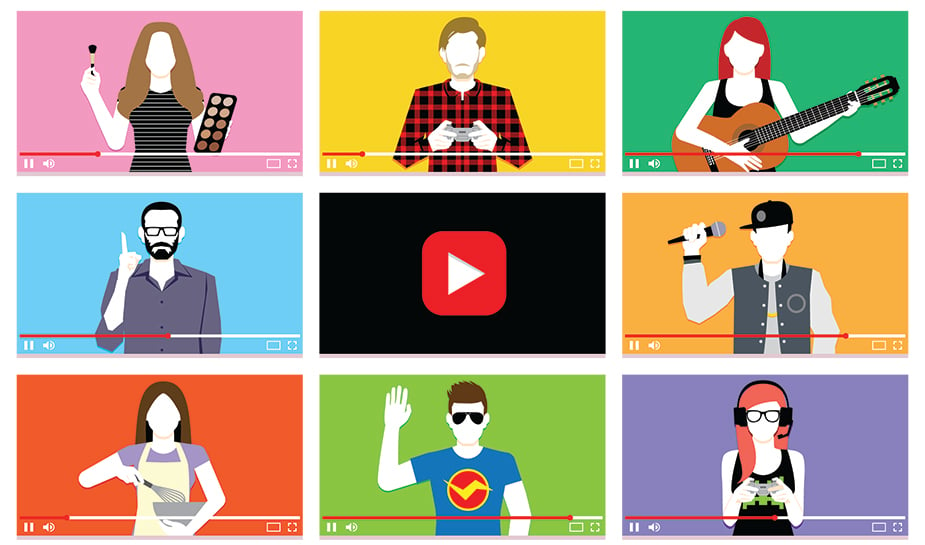Strategic influencer marketing has never been about scale – its about influence, and “more scale” does not necessarily equal greater influence.
There have been multiple issues recently around Influencer marketing, these include fake followers, low ROI and a lack of conversions, leading to some negativity around the profession. But with a good process in place, all of these issues are avoidable.
These issues arise because influence marketing is a relatively new industry with a lack of agreed terminology, systems and experienced players and agencies – so a lot of mistakes are to be expected
Over the years, I’ve created a series of definitions and processes that aim to help brands solve these issues, which I have outlined below. The end goal is to help guide the industry so that it can deliver influencer campaigns that are efficient and beneficial for the brands, influencers and customers involved – a true win-win.

In the future, we’re all going to become data sets, and as this data becomes ubiquitous and accessible, machine learning and A.I will be able to sift through the information and understand who everyone is influenced by, who gets my attention, who I trust and who I respect. As this happens, influencer marketing will become a central component of every single marketing campaign. I hope in some small part I can help prepare us for that future
The starting point – definitions
“An influencer is an individual who has the ability to focus the attention and affect the opinions of a consumer.”
Note there is no mention of social media in my definition. Influencer marketing is not about only working with those who have strong social media followings. The power at the centre of Influencer marketing is related to finding those who affect the opinion of consumers and working with them – where ever they are. This could be a blogger, or it could be a Mother in the PTA, a business professional, someone respected in a trade, a boy at the check-out at Walmart, a gatekeeper to an ultra high net worth individual or a school teacher.
Social media and data are the tools we use to find and often engage with these individuals of “influence” and their audience. Most key mistakes and issues related to the efficacy of influencer marketing can be traced back to focusing on the social media scale of an influencer instead of focusing on the Influence of individuals
Following from that definition, it leads to my definition for strategic Influencer marketing..
Strategic influencer marketing
Strategic influencer marketing involves a marketing plan that utilises individuals who have the ability to focus the attention and affect the decisions of a target market, achieving a long term brand goal of either positioning, sales or awareness.
Influencer roles & categories
Different goals are enabled by utilising different kinds of Influencers. This is because different kinds of Influencers deliver different things for brands, I have broken these down into the following;
Trust – How much is the influencer trusted by their followers
Authority – How much authority does an influencer have over a particular subject
Awareness – How much awareness can an influencer generate for a brand?
So now we can start analysing the different categories of influencers.
Your local heroes
A “local hero” – or an experiencer, as we like to call them – is someone who has zero to circa 5,000 followers. They are the cool kid at school or the influential member of her social circle – whatever wine she orders, her friends follow suit. They are not social media professionals and their followers trust what they say. They are rarely approached by brands but when they are approached, they respond well and when they talk about the brand to their followers, the response is significant.
Best utilised to achieve the following brand goals:
- Sales!
- Sales!!
- Sales!!!
What type of company should use local heroes?
- Insurance
- Banking
- Home building
Niche influencers
Niche influencer have authority on one subject. Their follows trust them, but only about photography, or cooking, or whatever their subject of expertise is. They tend to sit in the 5,000 – 100,000 follower area and are often approached by brands. They can can also be trade experts who validate and endorse brands to the consumer and Industry.
Best utilised to achieve the following brand goals:
- Validation
- Brand authority
- Trade awareness
What type of company should use niche influencers?
- Technology
- Alcohol
- Skincare
Power influencers
Power influencer have the ability to affect culture and groups en masse. They demonstrate a lifestyle that their followers or fans aspire to have in some small or greater part. Their lives, and their beliefs, tend to become more of a focus – and they aim to have their fans age with them. They are best used for awareness and positioning.
Best utilised to achieve the following brand goals:
- Distribution
- Awareness
- Aspiration
What type of company should use power influencers?
- Clothing
- Jewellery & accessories
- Makeup & beauty
The above are of course generalisations – but they stand as strong guidelines and definitions to help brands develop marketing strategies and also to provide terminology and a framework for the influencer marketing industry.
Want more influencer inspiration? Check out our Vans Made for the Makers and This is Burj Khalifa influencer campaign case studies.